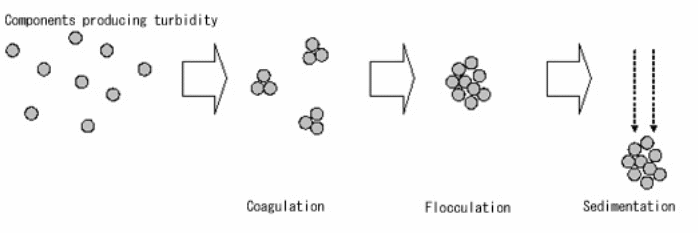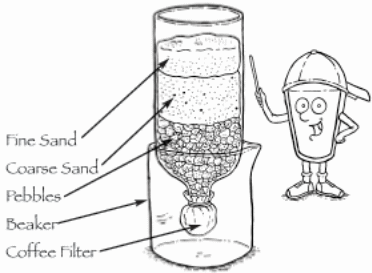It is important to treat some ground water and all surface water before consumption. This ensures that they do not pose any health danger, caused by chemical, microbiological, radioactive or physical contamination. The treatment is usually done in stages. Contaminants can be removed by physical means such as filtration, settling and chemical addition, as well as, biological means to remove microorganisms. This method is known as multiple barrier principle. Different circumstances make the process of water treatment selection to be complex (Logsdon, Hess & Horsley 1999, p.31). Some of the factors that are considered during the selection of water treatment processes, as described by Logsdon, Hess and Horsley (1999, pp.3-13) include:
Removal of Contaminant
This is the primary purpose of water treatment, especially surface waters. The treated water must satisfy all drinking water regulations, as discussed by Pontius (1998). He not only gave the status of the regulations, but also elaborated the looming effects on health and the sources of regulated contaminants that are to be expected.
Quality of Source Water
It is essential to note the contrast between the quality of source water and the quality of the desired treated water for better selection of the treatment process. It is possible to select processes of water treatment that would bring about appropriate changes in the quality of water, if knowledge on the quality of the source is known.
Reliability
Not only is the process of reliability a vital factor to consider, but also it could be key in the selection process. Since it is mandatory to disinfect surface water, the treatment process must be dependable. Robustness for filtration, which is an important element for reliability, is defined by Coffey et al. (1998), as a system’s ability to brilliantly remove particles or pathogens with minimal deviation from normal operating conditions under all circumstances.
Existing Conditions
The choice to upgrade or expand a treatment plant also determines which treatment processes are to be selected.
Process Flexibility
The treatment plant should have the ability to accommodate future amendments of regulations or quality of source water.
Utility Capabilities
After selection, design and installation of the treatment processes, the plant should be able to operate them effectively so as to achieve the preferred quality of water quality.
Costs
The cost of the process is another key factor in the selection process. Both capital and operation and maintenance costs of each process must be evaluated for the whole life cycle of the process.
Environmental Compatibility
The effect of provision of clean and safe water for drinking goes beyond the water treatment plant. The treatment processes should have proper residual waste management; incur minimal wastage of source water, and utilize adequate energy for treatment. The plant should not cause grave environmental problems. Harmon et al. (1998) notes that water utilities consume about 3% of the total electricity produced in the US. This is generally used for pumping the water. Treatment plant applies a mixture of filtration, disinfection, sedimentation, coagulation to ensure that the public consumes clean and safe water. The following process is followed during the conventional water treatment:
Prefiltration
Water prefiltration is used to reduce the amount of suspended solids. Prefiltration utilizes coarse sand or gravel. The types of prefilters that are used are vertical prefilters, which are more popular, horizontal prefilters and pressure filters, which makes use of pressure in removing suspended solids. Prefilters are vigorous, do not need chemicals and their parts are regulated which makes them very advantageous. However, “they not only require regular cleaning and maintenance, but also are ineffective removers of fine particles such as silt and clay particles” (Harmon et al., 1998, p. 21). Prefiltration does not remove viruses and bacteria that are linked to fine particles.
Sedimentation
The particles that move around the pool at a slow speed are usually suspended through a process known as sedimentation. A grit chamber is helps to remove big and grained solids through a simple sedimentation process. In this chamber, the slow moving water passes by while at the same time, the solids are suspended and felled. How, this process does not remove small particles as the water moves at relatively high speed hence limited time for suspension.
Coagulation
To remove the fine particles chemicals such as polymers, salts and aluminum is included in the water. Some examples of these coagulants are aluminum sulphate, ferric chloride, ferric sulphate or polyelectrolytes. After the occurrence of this neutralization reaction, the particles coagulate in a process known as flocculation. These large particles now called floc, become heavy and promptly sink to the bottom of the water tank through sedimentation. The sedimenter’s outlet, located near the top of the tank, makes it possible to remove water by a surface channel.

The dose of coagulants placed in solution is determined by the quality of raw water at the inlet of the mixing tank. Polyelectrolytes or synthetic polymers have gained popularity as coagulants since they rapidly form flocs due to their highly charged nature. Moreover, polyelectrolyte coagulation is an effective remover of viruses, bacteria and protozoa. Although coagulation is an effective process, it is also costly, requires greater accuracy when dosing and jar testing in addition to regular monitoring.
Filtration
Filtrations rid the water of particulate matter by compelling it to go past permeable media. This system comprises filters of varying pore sizes. Frequently, it is composed of charcoal, gravel and sand. From the diagram below, it is possible to note the composition various-sized particles in a homemade filter.

The fundamental categories of sand filtration that exist are slow and rapid sand filtrations. This does not mean that the difference between the two types lies in their filtration speeds. Slow sand filtration is in actual fact, a biological treatment process. This process makes use of bacteria, which digest contaminants, in treating the water. On top of the layer of sand, the bacteria set up a community which cleans the water as it passes through. When the schumtzdecke, layer of microbes, becomes very thick and subsequently reduces the flow rate, it should be cleaned. This is usually done after a few months. After this layer of microbes is removed, the bacteria should be given ample time (a few days) to reestablish another community before embarking on filtration. The slow rate of filtration, 0.1- 0.3 meters per hour, and the fine sand enhances the setting up of this microbial community. It rids the water of suspended particles.The filters are then immediately put back into operation (Logsdon et al., 1999)
Slow sand filtration produces microbiologically “clean” water that could be used without disinfection, but it is still advisable to disinfect the water as a protective measure. This process is rather labor intensive to manage and sustain. The comparatively high rates of flow, up to 20 meters per hour, relatively low labor costs and the use of fairly little space of operation, makes rapid sand filtration more popular. However, water that has passed through rapid sand filters requires disinfection, since it is not of the same quality as that of slow sand filtration (Coffey et al., 1998)
During filtration, whatever particles are removed is dependant on the size of filters employed. The reduction in the size of pores leads to retaining of a bigger fraction of material as water passes through the filter. The use of finer material, such as expanded clay or sand, or even application of a coagulant, ensures that smaller particles, ranging from 1-100 microns in size, are removed.
In most cases, filters of varied sizes are utilized so as to avoid quick clog up by large particles.
Slow sand filters get rid of viruses, protozoa and bacteria. Rapid sand filters only removes suspended solids, but normally cannot remove viruses, protozoa or bacteria. Current advancement in technological proficiency has not only encouraged but also allowed the effective exploitation of slow sand filtration operating at faster flow rates on small parcels of land just like in rapid sand filtration. Disinfecting the water inactivates the few remaining bacteria. Presently, the primary disinfectant used internationally is chlorine even though substitutes, such as ozonation, are increasingly being sought. Disinfection must be done on all water supplies to guard public health (Pontius, 1998).
References:
Coffey, B. M., Liang, S., Green, J.F., and Huck. P. M., 1998.‘Quantifying performance and robustness of filters during non-steady state and perturbed conditions.’ In: Proceedings of the 1998 AWWA Water Quality Technology Conference. [CD-ROM]. San Diego, CA: AWWA.
Harmon, R., Abrew, H.F., Beecher, J.A., Carns, K., and Linville, T., 1998. ‘Roundtable: energy deregulation.’ Journal of American Water Works Association AWWA, 90(4), pp. 26, 28, 30, and 32.
Logsdon, G., Hess, A., and Horsley, M., 1999. ‘Guide to selection of water treatment processes,’ in Letterman, D.R. (ed.) Water quality and treatment: A handbook of community water supplies, 5th edn. New York: McGraw-Hill, pp. 3.1, 3.3-3.11.
Pontius, F.W., 1998. ‘New horizons in federal regulation.’ Journal of American Water Works Association, 90(3), pp. 38–50.